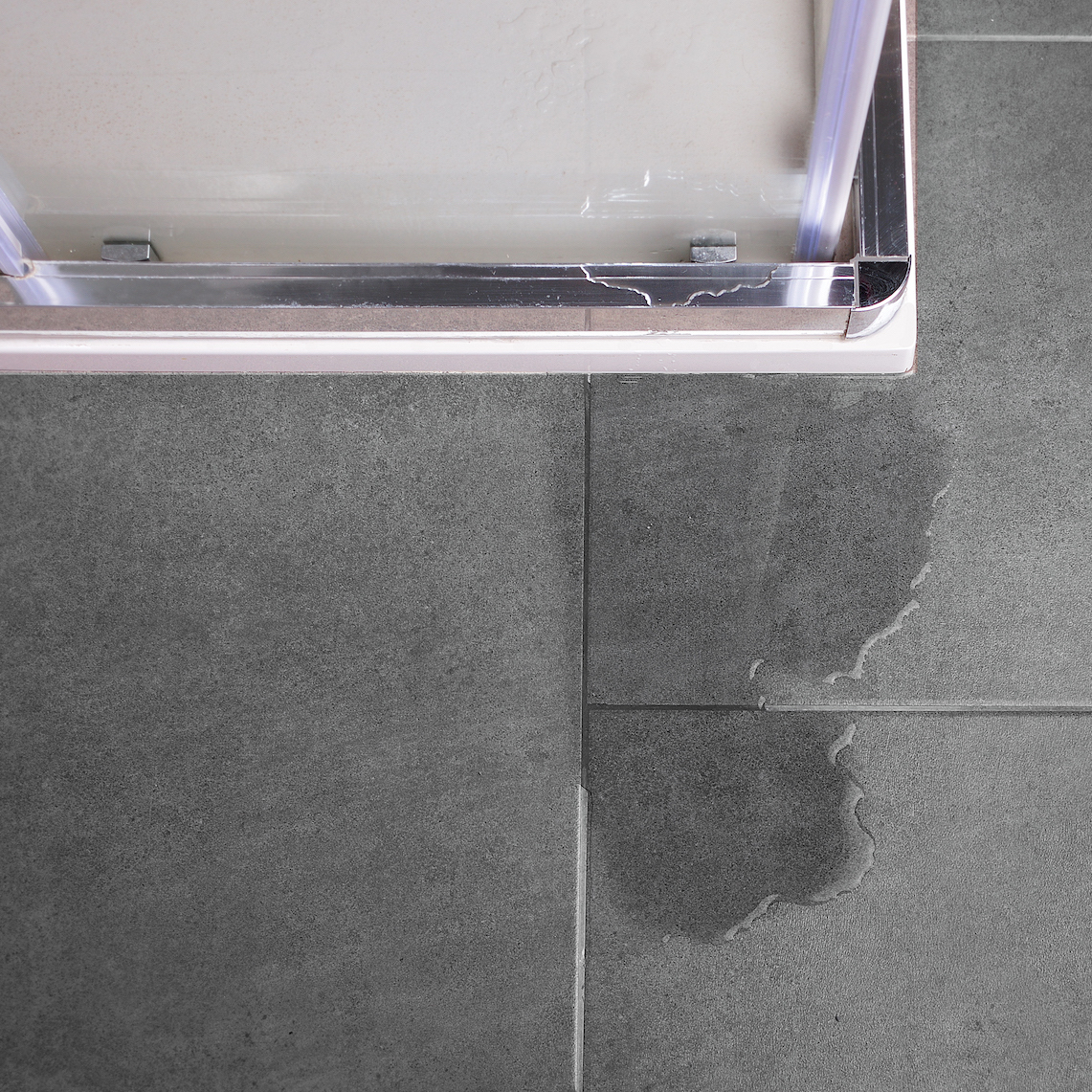
If you don’t get it sorted quickly a leaking shower can cause all sorts of damage to your home. Identifying exactly where and why your shower is leaking can be tricky – especially if the leak is behind the wall.
The worst thing you can do with a leak is ignore it because chances are it will only get worse and the first thing to do is stop using the shower until the problem is fixed. There are several ways a plumber can identify the source of a leak but that doesn’t mean you can’t do a bit of DIY investigating yourself first which could cost you extra labour time so here are a few things to consider:
7 reasons why your shower could be leaking
1. Faulty shower head or tapware – over time and through continuous use, tapware can become prone to leaking. While it could be a cartridge replacement you need, if that doesn’t do the trick you may be looking at a replacement or sometimes it is as simple as needing to re-silicone in behind the faceplate again to give a fresh new seal.
2. Damage to the acrylic shower tray – if the shower was installed without sufficient support underneath it, cracks can appear. Small cracks will eventually become larger cracks as you apply pressure (i.e., by standing in the shower). Even a small amount of water leaking through over time can cause mould, an unpleasant earthy smell and can cause major damage to your subfloor.
3. The shower waste has broken – this can be a tricky one to identify, however, if your shower is on an upper floor of the house and you can see water damage on the ceiling below it could mean a leak in the shower waste and this is a job best left to a qualified plumber.
4. Silicon sealant issues – tatty looking silicone or slight peeling can be a sign that water could be starting to penetrate. Removing and refreshing the silicone is a great start and one of the cheaper options. This is a job you could do yourself but be sure to follow the manufacturer’s instructions carefully so you’re not repeating the process in six months’ time. There is a real art to getting this right with no air bubbles and a good seal. Always allow a minimum of 24hrs dry time.
5. Grouting issues – even though grout is common around wet areas, it is not waterproof and over time will absorb some water, can start to crack or crumble away, allowing water to seep through. On average you should regrout and reseal your shower tiles every eight years.
6. The sealant on your tiles has warn away – your tiled shower should have a sealant applied when installed and there should be a warranty on the waterproofing membrane. The sealant ensures your tiles remain waterproof, but it will have a lifespan. If you have an older bathroom it could be time to reseal.
7. Pipe damage – if you notice peeling paint, or unusually damp areas of the wall surrounding your shower you could have a leak behind the wall. You never want to think of rats crawling in the cavities of your walls and nibbling through pipes and wires… but it does happen. Sometimes we find that a nail or something sharp like a wall anchor has pierced the pipe and over time this rusts and eventually falls out which then allows the water to spray through said hole causing damage over time.
If you think your leaky shower is beyond a DIY job, give us a call and one of our friendly plumbers can help get you and your shower sorted. We follow a process of elimination when it comes to this type of work and are often guided by the user as to which option we start with.

 09 5255 733
09 5255 733






